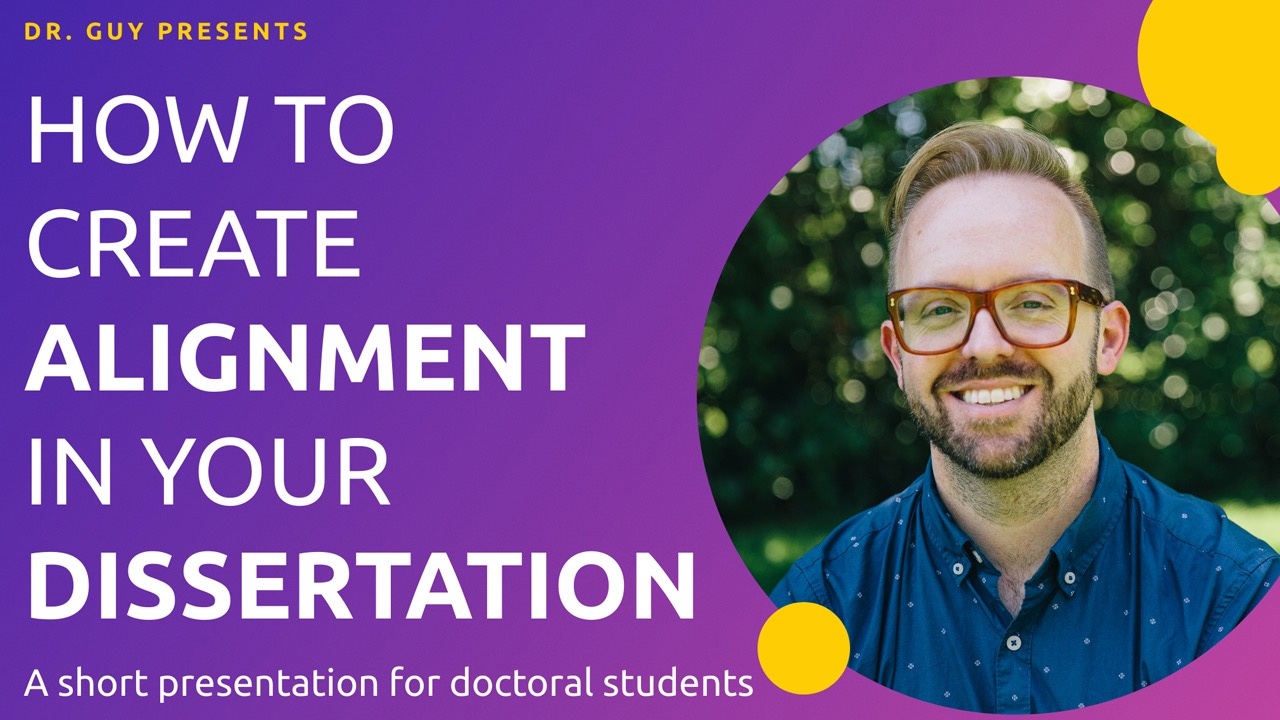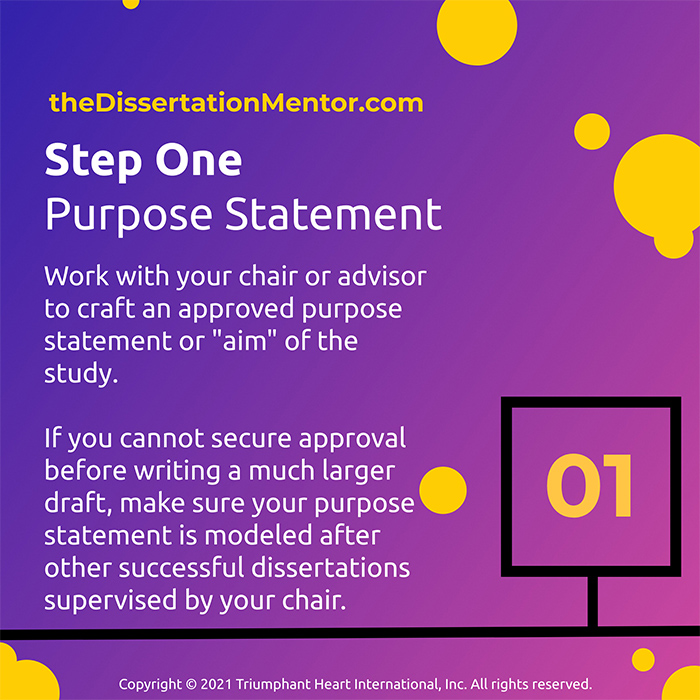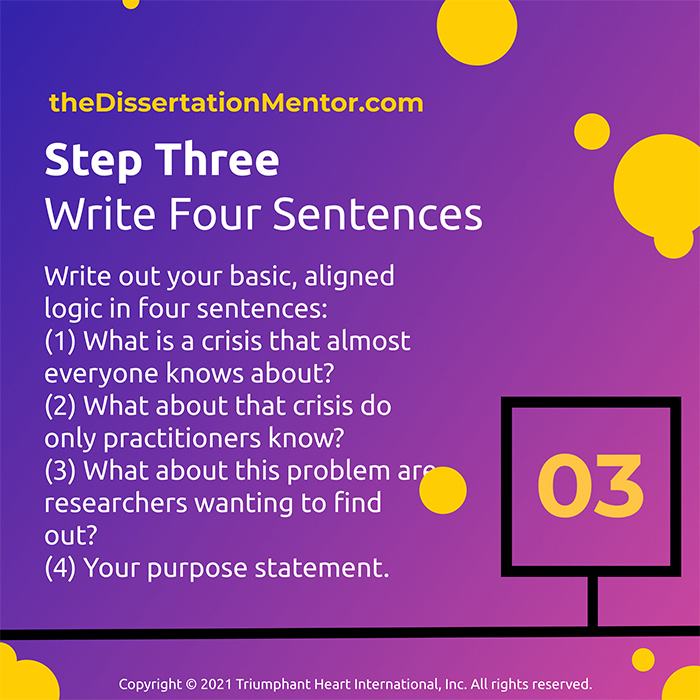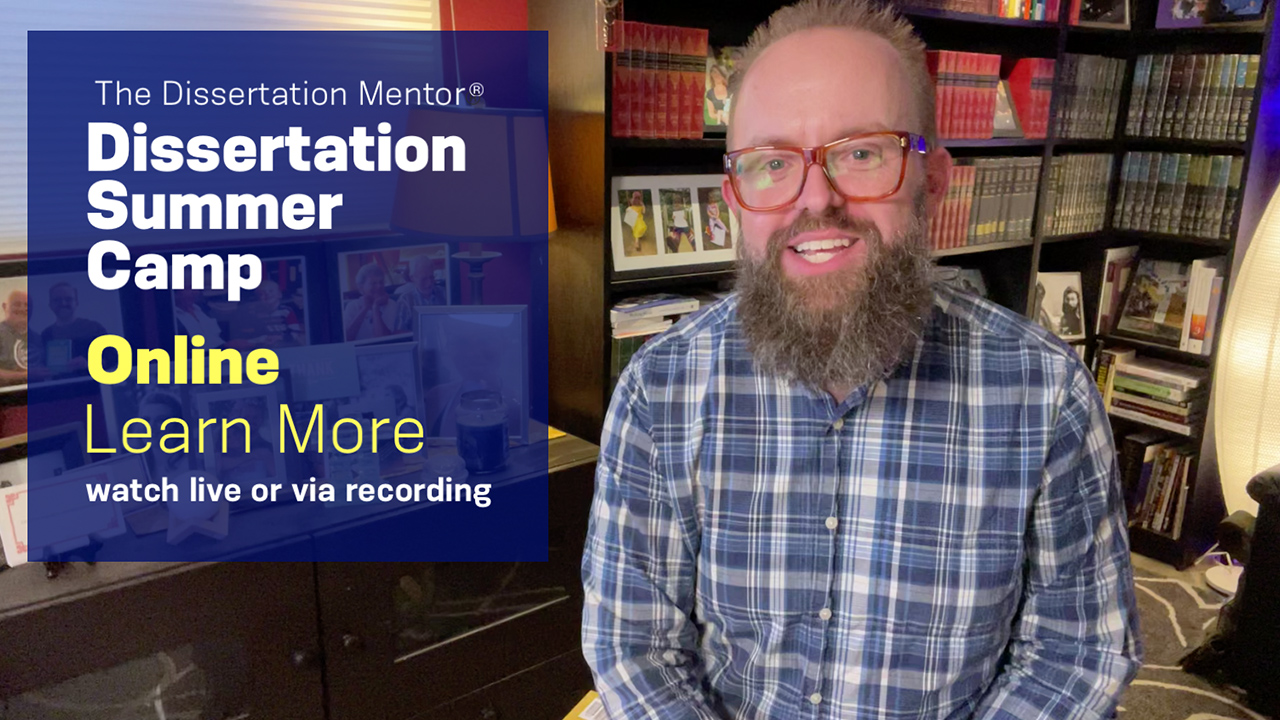How to Create Logical Alignment in Your Dissertation

Introduction
Hi Dissertation Writer! If you have found your way to this article, you are probably feeling lost. Not only are you disoriented, but you are “lost” in the worst way: You are lost when it does not have to be this way! I’m Dr. Guy, author of “The Dissertation Warrior,” and founder of the world’s most comprehensive online dissertation writing training for doctoral students: The Dissertation Mentor® Accelerator Program.
I'm running my Dissertation Summer Camp very soon. You should definitely attend! Now, onto the article.
Purpose of this Article
In this short article, I’m going to lead you through a brief intervention to get your dissertation’s logical alignment in tip-top shape!
What is “Alignment”?
In short, “alignment” is defined as the clean flow of logic in your dissertation between (1) what you are studying, (2) why you are doing that study, and (3) how you will go about that study.
Usually, doctoral dissertation writers hear about alignment for the first time when they submit their first substantive draft of their initial chapters or complete a more minor program-required assignment like a concept paper, mini-prospectus, or form-based proposal.
When your chair, advisor, or instructor says, “Work on the alignment,” what they often are saying is: “I want to see a tight line of logic between (a) what you want to study, (b) why one should go about that study, and (c) how you plan on conducting that study." Based upon this information alone, it could sound like an easy task. There are several reasons why it’s not.
What Not to Do
When you receive this feedback for the first time, you have most likely submitted something many pages long. The feedback provided to you about alignment probably came alongside lots of other feedback. After all, that’s what professors do! They grade things, provided feedback, and want to help the students under their care.
The problem with having many pages with which to work, responding to many requests for feedback is that fixing one’s alignment is a task of “minimalization” – you can’t improve your alignment quickly when working with many pages or many paragraphs. Resist the temptation to send an entire draft revision. Instead, just send your chair four sentences.
How to Fix Your Alignment
If you’d like to get a walkthrough of the process via video, you can watch it here. Otherwise, continue reading.
First, as a prerequisite, you should have an approved purpose statement. If you don’t have one, work with your chair or advisor to get an approved purpose statement or “aim” of your study. If you can’t secure approval before writing a much larger draft, make sure you model your purpose statement after other successful dissertations supervised by your chair. If you want some guidance about that, you can find an excellent video here.

Second, find recommendations for future research in other studies that match your purpose statement. Think about it: It’s easy for your chair to argue with your particular study topic if it simply arose from your heart and head. However, if your study is based upon the recommendations for future research of other great researchers – well, that’s much better! As you search for recommendations for future research, you might not be able to find an exact match to your purpose statement, so find anything that sounds close.

Third, you are going to write four sentences. Each sentence plays a specific role in your study. Therefore, you must take the time needed to write these sentences. They are not “quick” sentences: These are very well-crafted sentences.
1. What is a crisis in the world (relating to your topic) that almost everyone knows about? Think about a crisis that has been on the news lately. If you interviewed Grandma, even she would know about it. :)
2. What about that crisis do only practitioners know? By practitioners, I mean people like you or people like those you plan on studying. Get us closer to the “researchable problem” covered in the following sentence.
3. What about this problem are researchers wanting us to find out? This sentence should be the poison for which your purpose statement is the antidote. If we did your study, this problem would be “lessened” or “understood better” somehow.
4. Your one-sentence purpose statement.

Finally, send those refined four sentences to your chair. Further negotiate and refine with their help. A logical next step is to discuss your intended research design and research questions.
Parting Words
Remember, what makes this part of your dissertation process so overwhelming is, in part, due to trying to do too much at the same time. Try not to refine an entire multi-page or multi-chapter draft into perfect alignment as a first step. Start with this super-small activity above with your chair to get on the same page.
If you found this article helpful and want to check out my other resources, you can find them below and always at my website at www.theDissertationMentor.com
If you want to pour jet-fuel on your dissertation writing process, consider joining me in my flagship program.
Further Learning
Read: Chapters 23-24 of The Dissertation Warrior
Watch: How to Write a Purpose Statement
Watch: How to Write a Problem Statement
My Program: The Dissertation Mentor® Accelerator Program
Get all Dr. Guy's free stuff in one email! A dissertation treasure!
It's my purpose on this planet to help doctoral dissertation writers finish so they can graduate. I'll send you all my free stuff in one email. Then, I'll send you more amazing stuff as I create it! By signing up for our freebies, you agree to abide by our terms and privacy policy.



